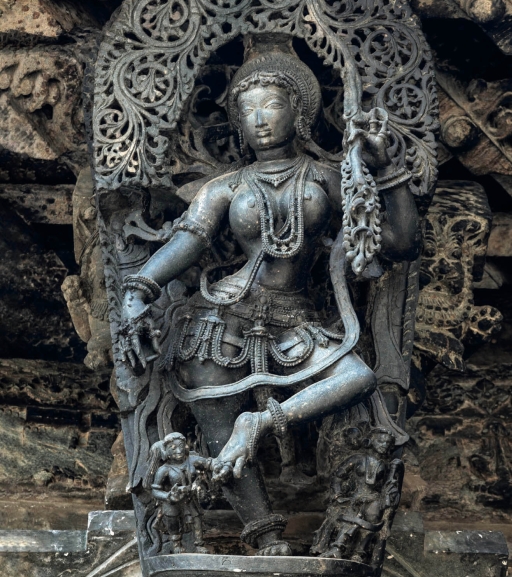Explore Mysuru and Srirangapatana with the DHF’s newest guide
Launching the Mysuru and Srirangapatana Guidebook
Last month, we celebrated the publication of our new Mysuru and Srirangapatna guidebook in a series of events. Our co-founder and trustee, Dr. George Michell, who is also one of the authors on the guidebook, gave an evocative talk at the Wadiyar Center for Architecture in Mysuru and the Bangalore International Centre in Bengaluru, which drew praise from The Hindu.
“In an engaging virtual romp through the streets and monuments of Mysuru and Srirangapatna, George brings alive the history and people that shaped these architectural marvels, taking his audience straight into colonial India between the 18th and 20th centuries.”
– The Hindu
 George Michell speaks about the monuments of Mysuru
George Michell speaks about the monuments of Mysuru
We also had the pleasure of welcoming the Minister for Tourism, H.K. Patil at a panel discussion that was hosted at the Museum of Art and Photography (MAP) with George and two of his guidebook co-authors, Malavika Murthy and Shivendra Urs, in conversation with our co-founder and trustee, Dr. Helen Philon.
 From l-r, Helen Philon, Malavika Murthy, Shivendra Urs and George Michell at the MAP book launch event
From l-r, Helen Philon, Malavika Murthy, Shivendra Urs and George Michell at the MAP book launch event
A peek inside
The guide opens with a summary of the historical background of Mysuru and Srirangapatna by Caleb Simmons, and an account of the architectural styles by George Michell. It continues with a tour of Mysuru’s principal monuments, including the renowned Mysore Palace and the rest of the city, ending with Chamundi Hill and Brindavan Gardens. It then focuses on the Srirangapatna fort, mosque and temples inside the ramparts, before exploring Tipu’s palace and tomb elsewhere on the island.
 Royal cremation ghat at Paschimavahini, Srirangapatna. Photo credit: Surendra Kumar.
Royal cremation ghat at Paschimavahini, Srirangapatna. Photo credit: Surendra Kumar.
Famously associated with Tipu Sultan and the “Siege of Seringapatam” in April-May 1799, the history of Srirangapatna island in the Kaveri River goes back to much earlier times. The name of the settlement here is first found in an inscription of 894, dating from the reign of a king of the local Ganga dynasty, which mentions Shri Ranga Pattana (Town of Shri Ranga).
The Dariya Daulat Palace in Srirangapatna features the most significant pictorial record of Haidar Ali and Tipu Sultan’s era. The murals covering the walls of the verandah are of outstanding artistic and historical interest. In stark contrast to the battle scenes on the western wall is a mural on the eastern wall, which depicts times of peace under Tipu.
 Tipu’s allies and subordinates with their retinues; Daria Daulat Palace, detail of mural on the east wall, Srirangapatna. Photo credit: Surendra Kumar.
Tipu’s allies and subordinates with their retinues; Daria Daulat Palace, detail of mural on the east wall, Srirangapatna. Photo credit: Surendra Kumar.
The mural features more than one hundred palaces and mosques with fanciful roofs and domes. The standing and seated figures inside these buildings represent Tipu’s numerous contemporaries, allies, subordinates, and military officers, as well as his adversaries, together with their retinues and attendants. Though there are no painted labels, several figures have been identified as the Rajas of Tanjavur and of Varanasi, the Nawab of Arcot, and the Rani of Chittor in Andhra Pradesh.
If these details have piqued your interest, get your own Mysuru and Srirangapatna guide now at the DHF Bookstore.

